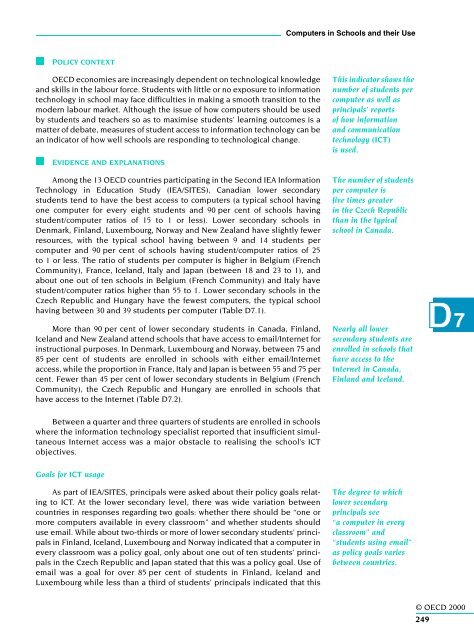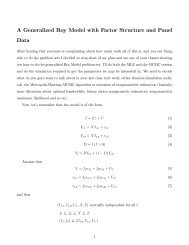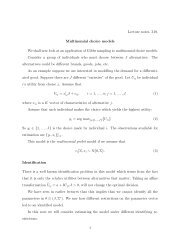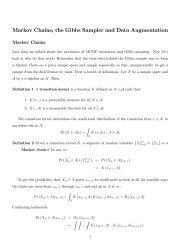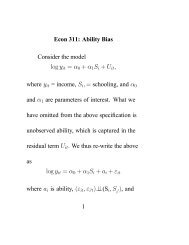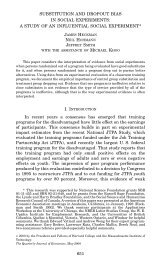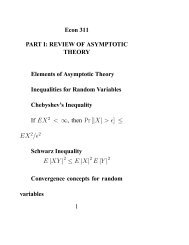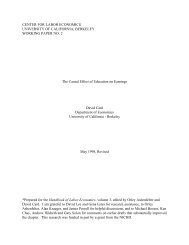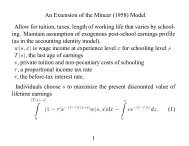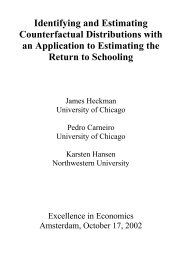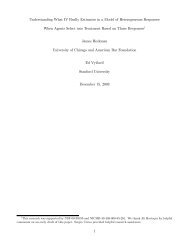OECD (2000)
OECD (2000)
OECD (2000)
Create successful ePaper yourself
Turn your PDF publications into a flip-book with our unique Google optimized e-Paper software.
Computers in Schools and their Use<br />
POLICY CONTEXT<br />
<strong>OECD</strong> economies are increasingly dependent on technological knowledge<br />
and skills in the labour force. Students with little or no exposure to information<br />
technology in school may face difficulties in making a smooth transition to the<br />
modern labour market. Although the issue of how computers should be used<br />
by students and teachers so as to maximise students’ learning outcomes is a<br />
matter of debate, measures of student access to information technology can be<br />
an indicator of how well schools are responding to technological change.<br />
EVIDENCE AND EXPLANATIONS<br />
Among the 13 <strong>OECD</strong> countries participating in the Second IEA Information<br />
Technology in Education Study (IEA/SITES), Canadian lower secondary<br />
students tend to have the best access to computers (a typical school having<br />
one computer for every eight students and 90 per cent of schools having<br />
student/computer ratios of 15 to 1 or less). Lower secondary schools in<br />
Denmark, Finland, Luxembourg, Norway and New Zealand have slightly fewer<br />
resources, with the typical school having between 9 and 14 students per<br />
computer and 90 per cent of schools having student/computer ratios of 25<br />
to 1 or less. The ratio of students per computer is higher in Belgium (French<br />
Community), France, Iceland, Italy and Japan (between 18 and 23 to 1), and<br />
about one out of ten schools in Belgium (French Community) and Italy have<br />
student/computer ratios higher than 55 to 1. Lower secondary schools in the<br />
Czech Republic and Hungary have the fewest computers, the typical school<br />
having between 30 and 39 students per computer (Table D7.1).<br />
More than 90 per cent of lower secondary students in Canada, Finland,<br />
Iceland and New Zealand attend schools that have access to email/Internet for<br />
instructional purposes. In Denmark, Luxembourg and Norway, between 75 and<br />
85 per cent of students are enrolled in schools with either email/Internet<br />
access, while the proportion in France, Italy and Japan is between 55 and 75 per<br />
cent. Fewer than 45 per cent of lower secondary students in Belgium (French<br />
Community), the Czech Republic and Hungary are enrolled in schools that<br />
have access to the Internet (Table D7.2).<br />
This indicator shows the<br />
number of students per<br />
computer as well as<br />
principals’ reports<br />
of how information<br />
and communication<br />
technology (ICT)<br />
is used.<br />
The number of students<br />
per computer is<br />
five times greater<br />
in the Czech Republic<br />
than in the typical<br />
school in Canada.<br />
Nearly all lower<br />
secondary students are<br />
enrolled in schools that<br />
have access to the<br />
Internet in Canada,<br />
Finland and Iceland.<br />
D7<br />
Between a quarter and three quarters of students are enrolled in schools<br />
where the information technology specialist reported that insufficient simultaneous<br />
Internet access was a major obstacle to realising the school’s ICT<br />
objectives.<br />
Goals for ICT usage<br />
As part of IEA/SITES, principals were asked about their policy goals relating<br />
to ICT. At the lower secondary level, there was wide variation between<br />
countries in responses regarding two goals: whether there should be “one or<br />
more computers available in every classroom” and whether students should<br />
use email. While about two-thirds or more of lower secondary students’ principals<br />
in Finland, Iceland, Luxembourg and Norway indicated that a computer in<br />
every classroom was a policy goal, only about one out of ten students’ principals<br />
in the Czech Republic and Japan stated that this was a policy goal. Use of<br />
email was a goal for over 85 per cent of students in Finland, Iceland and<br />
Luxembourg while less than a third of students’ principals indicated that this<br />
The degree to which<br />
lower secondary<br />
principals see<br />
“a computer in every<br />
classroom” and<br />
“students using email”<br />
as policy goals varies<br />
between countries.<br />
© <strong>OECD</strong> <strong>2000</strong><br />
249


